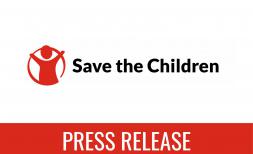ROMANIA: UNACCOMPANIED CHILDREN CAUGHT IN AN INVISIBLE CRISIS

Children sleeping on the streets and at train stations, a lack of food and limited shelter – a 134% increase in the number of refugees and migrants arriving in Romania in just one year has left the country struggling to provide basic support to children in need passing through[1], warned Save the Children.
By travelling through Romania, an increasing number of migrants and refugees on their way to Western Europe hope to evade the often violent pushbacks at the Croatian border, Save the Children staff was told.
Due to the limited accommodation capacity, children often stay in shelters under poor conditions. In one of these centres, that also houses adults in Timisoara, western Romania, children and families had to spend their nights on the floor before the situation was addressed. Save the Children’s teams also reported a lack of access to food and hygiene in some of the centres.
Unaccompanied children are especially at risk, Save the Children warned, as none of the facilities have dedicated safe spaces for them - they are placed in the same room as male adults. Due to worrying gaps in identification and protection services, children travelling alone often end up living on the streets, at train stations, parks and abandoned buildings with the men they are travelling with.
Since 2015, Romania has been part of the Balkans Migration Route to Central and Western European countries. Children make up around 25 percent of the new arrivals in Romania, which reached 6,156 in 2020[2]. Of those 1,539 children, almost two-thirds are unaccompanied, according to government officials[3].
The actual number of people making the journey through Romania is likely to be higher, as many don’t end up in accommodation centres. The situation is made worse by COVID-19, with little capacity to isolate cases or provide health services.
“I ended up in Romania because I wanted to go to Italy,” said Sharif*, a 17-year-old boy from Afghanistan who arrived in Romania in December 2020. “I asked for asylum, but I don't have any hope. I will continue my journey.”
“I left my country in 2017. It was a difficult journey. There were days when I had nothing to eat or drink, my clothes were dirty, and I was in danger almost all the time. I saw people fighting for food and stealing from other migrants. All I wanted in those moments was to be home with my parents and my brothers and sisters," he added.
Save the Children is supporting children with food, clothing, and hygiene products such as disinfectants, face masks and first aid items. The agency is also running education and psychosocial support programmes to help children during their stay.
Gabriela Alexandrescu, Executive President at Save the Children Romania, said:
“The daily struggle of increasing numbers of unaccompanied children and vulnerable families is becoming an invisible crisis. Hundreds of children, including children with no guardian or caregiver, are not getting adequate support. They are arriving in Romania hungry and exhausted. We have met many who had been injured because of the harsh weather, long walks, and lack of proper hygiene. This suffering has to end. Children have right to be protected and have dignified life.”
“Romania is mostly used as a transit corridor from Serbia to Central and Western European countries, bypassing the well-controlled border between Serbia and Hungary”, said Bogdan Krasic from Save the Children’s Balkans Migration and Displacement Hub, an initiative researching migration trends in the Balkans. “According to some testimonies collected by Save the Children in Serbia and Bosnia and Herzegovina, refugees and migrants have increasingly been using the Romania-route to evade violent pushbacks on the other prominent route in the region - the border between Bosnia and Herzegovina and Croatia.
Save the Children is urging authorities in Romania to ensure people, especially children, have access to quality reception, including by increasing current reception capacity and focusing on children travelling alone, families and the other vulnerable groups. The organisation is also calling for basic services to be improved for families and the most vulnerable children. Adequate food and psychological support must be available for children from the first day of arrival.
*Name changed to protect child's identity
Notes to editors
Save the Children Romania is working with asylum-seeking and refugee children, including unaccompanied and separated children, providing direct services in and outside the reception centres. In addition, we provide assistance to parents and vulnerable adults (pregnant women, disabled people, single parent families, elders).
In Serbia, over 13,000 testimonies about irregular pushbacks from Romania were collected in 2020 (UNHCR). The reported number of pushbacks from Romania grew progressively through 2020, correlating with the increase in the movement and the number of arrivals in the country. No data about pushbacks inside Romanian territory is available.
[1] Number of arrivals grew from 2,626 in 2019 to 6,156 in 2020 according to the Romanian General Inspectorate for Immigration (GII) through UNHCR
[2] Out of 15,742 asylum requests submitted in past 4 years, about 40% of the applications were submitted in 2020, when over 6,100 new arrivals were recorded, regardless of COVID-19 restrictions.
[3] Unpublished official data collected by UNHCR from the Romanian General Inspectorate for Immigration (GII)
For more information or interview requests, kindly reach out to:
Ahmed Bayram, ahmed.bayram@savethechildren.org /
Faiz Jamil, faiz.jamil@savethechildren.org /
Out-of-hours (GMT) and weekend: Media@savethechildren.org.uk / +44 7831 650 409




